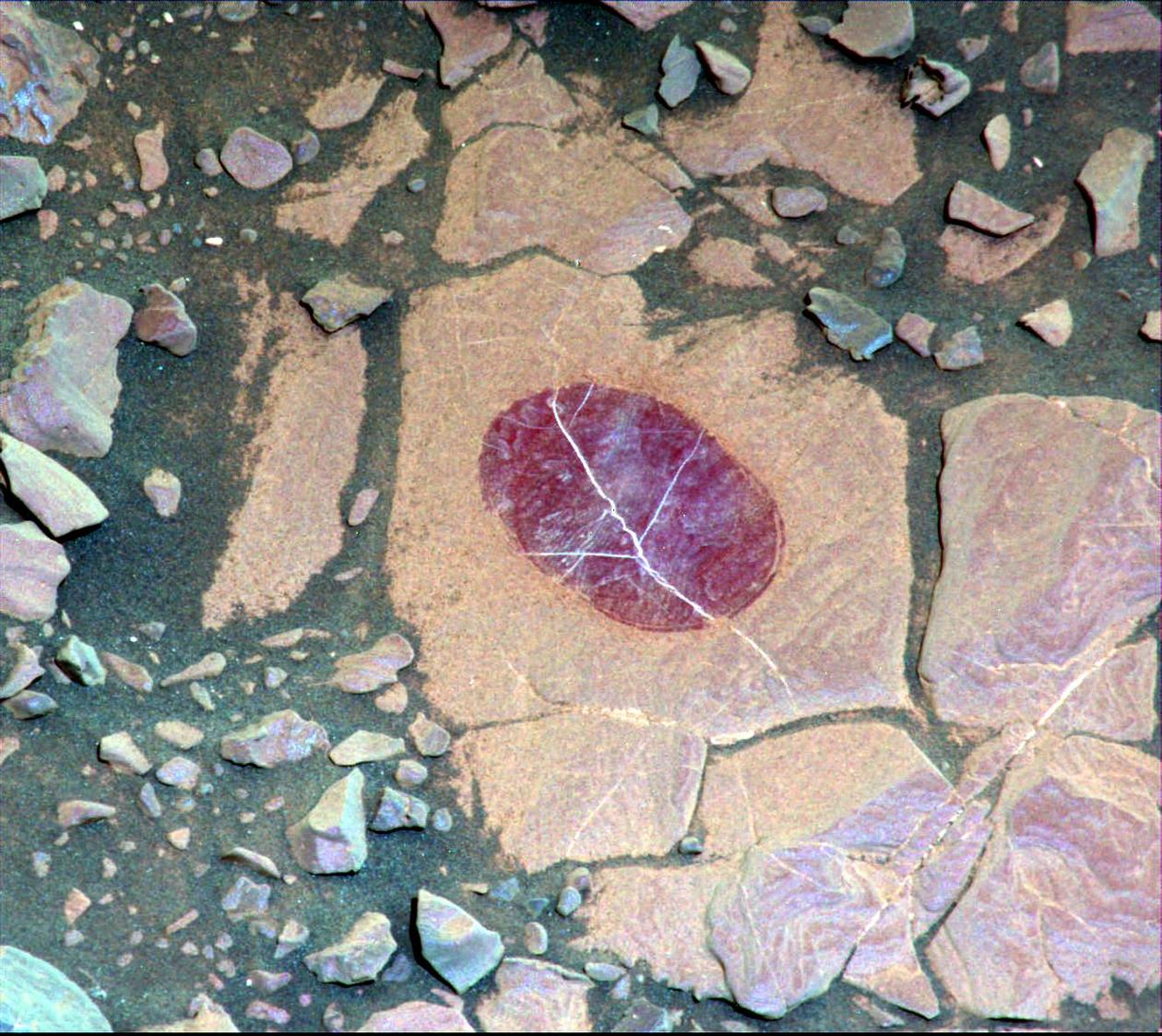Doctors are only human. That means, among other things, that they are fallible, and they will make mistakes. Most of us try not to think about that fact too hard when they’re in charge of our lives, choosing instead to believe that the statistics are in our favor.
Which they totally are, usually!
And if you want to continue feeling good about that fact, you might want to avoid these 15 confessions.
15. Sort of a happy ending.
Pathologist here. Biggest mistake I ever made was cutting myself during an autopsy on an HIV patient. Lucky for me, I did not acquire the virus, so everything had a happy ending. (For me, anyway. That guy was still dead.)
Edit: Thanks to whoever gave me gold for fucking up at my job.
Edit 2: I am going to personally fillet the next person who says “relevant username”.
14. This is just heartbreaking.
My brother is a surgeon, and during part of his residency, he had to work in the pediatric unit. He was working with two newborns. One was getting much better and fighting for life. He was going to make it just fine. The other baby was hours from death. He wasn’t going to make it. My brother was in charge of informing the families. My brother realized about 15 minutes later that he had mixed up the families. He told the family with the healthy baby that their baby wasn’t going to make it, and he told the family with the dying baby that their baby was going to be just fine. He then had to go back out to the families and explain the situation to them. How devastating. To be given a glimmer or hope and have it ripped away from you not even an hour later. That was most upset I’ve heard my brother. He felt destroyed.
13. She almost killed someone.
In health care, we make mistakes. At every level from the top to the bottom, mistakes get made, and you just try to keep them as infrequent and minimal as possible.
When I was a student rotating through OB/Gyn, and I wrote an order for a woman’s post-partum continuation of magnesium sulfate, as she was pre-eclamptic ante-partum. I was super careful, because I knew what could happen with magnesium toxicity, and double-checked the order with the resident afterwards.
The nurse, instead of hanging one bag of mag-sulfate and another of I forget what, hung two bags of mag-sulfate, one of which she slammed into the patient over a minute, instead of slow-infusing over 12 hours.
The woman told the nurse she didn’t feel right, and the nurse poo-pooed it. I happened to be walking by, and stopped in to see what was up. There they were, two bags hanging, both marked in a bright red warning label. We called for the fast response team.
They, and my team, got there in time and took over, but she still went into respiratory depression and ended up in the ICU.
We all make mistakes, some of which are dangerous. I’ve absolutely made my fair share. I’ve missed diagnoses, or tried to save patients from a trip to the ER and they’ve ended up in the ER anyway, just later. As long as you recognize your mistake and make an effort to improve afterwards, and it wasn’t too neglectful / egregious, I understand.
But I reamed the nurse when I overheard her laughing about the incident like she hadn’t just almost killed someone. I don’t know what she thought, getting told off by a rotating student, but I was pissed at the time.
EDIT: ICU, not ER.
12. Get some sleep, y’all.
My parents are nurses. They knew a doc who’d been on a 36 hour shift. Patient came in with a punctured lung (I think) and the doc had to collapse the lung to fix whatever was wrong with it.
Through tiredness he collapsed the wrong lung, and the patient died. Doc ended up killing himself after being fired.
Don’t burn yourself out.
11. You never forget them.
Doctor here. I assume we mean medical errors and not general life decisions. No comment on life decisions. For medical error, I will not use a throwaway because I strongly think we should feel free to disclose our mistakes in order to improve quality and learn from each other.
My first week of my intern year (year one outside of medical school, when you’re on call overnight and all that, AKA “Season One of Scrubs”), everyone “signs out” their team’s patients to the doctor on call overnight. So that doctor (intern, with an upper-level resident also present overnight to supervise) is covering many patients they hardly know, maybe 60 or more. The situation was that a patient with dementia, unable to really communicate with people and clearly ‘not there’ but conscious, arrived from a nursing home with I think some agitation as the original complaint.
Basic labs ordered in the ER show the kidney function is worse than usual, which could be due to many things, but what really MUST be distinguished is between ‘not enough blood pumped forward to the kidneys and rest of the body’ (e.g. heart is failing and it’s backing up into the lungs) VS ‘not enough liquid in the blood TO flow’ (e.g. due to vomiting a lot or something). This is critical to distinguish because for the first you give medicine to make them pee out the extra liquid, and in the second you give more fluid. Either treatment for the opposite problem is catastrophic. Fortunately it’s usually easy to distinguish ‘wet’ from ‘dry’, based on listening to heart and lungs, chest x-ray (is there ‘congestion’ evidence?), blood pressure and heart rate (tend to drop BP and raise heart rate upon going from laying down to standing positions if you’re too ‘dry’), looking at neck veins while sitting up at an angle (they bulge if too ‘wet’), and so on. This patient was unable to cooperate with exam, answer questions, and the X-ray was sort of borderline (unchanged from the last x-ray maybe several weeks ago). My resident instructed me to sign out the patient with instructions to continue a 500mL saline inflow, then re-assess to see whether the patient looked more ‘wet’ or less ‘dry’. I signed this out, and forgot to make the order to stop the saline after 500mL, so it ended up running slowly in all night. The intern on call (also first week as doctor) forgot to re-assess at all or shut off the saline if it had been noticed because so busy with new admissions. We’d also ordered 3 sets of ‘heart enzymes’ meant to diagnose a heart attack, one reason for a patient suddenly getting ‘wet’ (i.e. heart pump failure), since the EKG was not interpretable (had a pacemaker which makes it impossible to tell). Lab fucked up too, because hospital policy was that if the first set of ‘heart enzymes’ was negative, apparently the 2nd and 3rd sets, each traditionally spaced 6-8hrs later to catch a heart attack if it starts to evolve and become detectable by blood test, were both cancelled.
I came in and first thing in the morning checked on this patient, who was screaming things nobody could understand and the nurses had chalked up to dementia and agitation. I checked the labs and saw the second and third heart enzymes hadn’t been done. I went to the bedside and saw the IV fluids still running. I immediately ran to the overnight intern, who said things had been so busy and nobody had called to notify that things were wrong. We stopped the fluids, immediately got a heart enzyme test, learned this patient was by now having a massive heart attack made much worse by the addition of IV fluids all night to this frail failing pump. I can’t get the screams out of my head, and cried a lot and was pretty depressed for a few weeks at least after this. The patient died because the status ended up being decided as not to resuscitate based on what the nursing home had on file, although no family members were known at all. This patient was totally alone, and spent the last night of their life in physician-induced agony. But I acknowledge the failure of two interns, the nurses, and the lab. Ultimately the blame fell on the lab and I think someone was fired, but I made clear to everyone that I felt to blame and wanted quality improvements made to prevent future errors, or at least catch them early if they happen. That’s I think the best you can do when you make a mistake.
There’s a Scrubs episode where as I recall at the end there’s a brief scene where the ghosts of dead patients representing medical errors follow around the physicians like little trains. It’s very poignant, but I can’t find the clip. That’s what it’s like though.
10. Terribly sorry, but I’m a member of the family now.
Not a big mistake but definitely awkward at the time. I was gluing up a lac on a 14yo girls forehead. Anyone who has used dermabond before knows that stuff can be runny and bonds very quickly. I glued my glove to her face. Her mum was in the room, and I had to turn to her and say “Im sorry, I’ve just glued my glove to her face”
9. That’s a doozy.
I’m a nurse, but I was working in the ER when a guy came in for a scratch on his neck and “feeling drowsy”. We start the usual workups and this dude’s blood pressure TANKED. We scrambled, but he was dead within 10 minutes of walking through the door. Turns out the “scratch” was an exit wound of a .22 caliber rifle round. The guy didn’t even know he’d been shot. When the coroner’s report came back, we found that he’d been shot in the leg and the bullet tracked through his torso shredding everything in between. There was really nothing we could’ve done, but that was a serious “what the fuck just happened” moment.
8. She doesn’t blame you, but…
As a very young doctor in training I misdiagnosed a woman with epilepsy. Some years prior she had sustained a gunshot wound to the frontal area, damaging the underside of one of her frontal lobes and severing an optic nerve to one of her eyes, as well as some of the muscles that rotated that eyeball. Surgery saved her life but the frontal lobe was scarred and the eye was blinded and always pointed down and at an angle away from her nose.
A few years after that she began having spells of a bizarre sensation, altered awareness, a pounding in the chest, and she had to sit down, stop what she was doing, and couldn’t speak. These were odd spells and I assumed she had developed frontal lobe epilepsy from the scar on her brain. Increasing doses of anti-seizure drugs seemed to work initially, but then the spells came back.
A couple years after my diagnosis her endocrinologist, who treated her for diabetes mellitus, checked a thyroid. It was super-high. The spells were manifestations of hyperthyroidism. She drank the radioactive iodine cocktail which ablated her thyroid, got on thyroid replacement therapy, and felt well thereafter. No permanent harm done and she was able to come off the anti epilepsy drugs.
She was obese – not the typical skinny hyperthyroid patient – and if she developed thyroid eye disease, I couldn’t tell because her one eye was already so messed up. I see how I screwed it up. but in retrospect I have never been sure what I could have done differently, except test her thyroid at the outset of treatment. Hence, a lot of patients – thousands – have had their thyroid checked by me since then. Every so often I pick up an abnormality and it gets treated.
The lady was an employee of the hospital where I trained and I ran into her one day;she gave me a hug and let me know how this had all gone down. She made a point of wanting me to know she didn’t blame me “because I always seemed to care about her and what happened to her.”
I think about her, and how I screwed up her diagnosis and set back her care, almost every day. I am a much better diagnostician now but I always remember this case and it reminds me not to get cocky or be too sure that my working diagnosis is correct.
7. Talk about high stress.
PharmD here. Couple different quick stories.
Heard of a pharmacist who filled a fentanyl patch incorrectly and the dose was so high that the patient went into severe respiratory depression and died. They’re still practicing.
Worked with another pharmacist back in the mid 2000’s when I was still a tech who filled a script for Prozac solution (concentrated it is 20mg per mL. Average adult dose is 20 mg.) instead of 1 mL once daily he filled it for one teaspoonful (5 mL). The child got serotonin syndrome and almost died. He is no longer working to my knowledge.
6. Take a closer look.
Someone else tragically lost their life years ago but the incident saved my sister’s life about 10 years later.
Several years ago, my sister and I were in a car accident. I had visible injuries, she did not and was walking around without any problems, so we thought. Nine days later, she was preparing dinner, began to feel ill, vomited and then passed out. She was taken by ambulance to the hospital emergency and after talking to my brother-in-law for only a couple of minutes, he rushed my sister into surgery and removed her spleen immediately, it had ruptured in the accident but was a slow bleed.
My sister was in ICU for a couple of weeks but survived and is in good health today. Later, the admitting trauma surgeon said he recognized what was happening because of a mistake his college professor told the class she made as a surgeon years earlier.
A teenage boy had fallen from a cliff and hit rocks below, other than being bruised he was fine so did not seek medical help. Seven days later he was brought unconscious into ER, where the college professor was working as a surgeon at the time. She and her team were not able to quickly identify his symptoms of a ruptured spleen that had happened 7 days ago. The teenage boy died about an hour later.
She was always sure to share this particular incident with her students, thus saving my sister’s life when one of her former students (my sister’s doctor) showed up to class that day!
5. I mean at least he lived.
I missed a gunshot wound once. A guy was dumped off at the ER covered in blood after a rap concert. We were all focused on a gunshot wound with an arterial bleed that was distracting. The nurse placed the blood pressure cuff over the gun shot wound on the arm. We all missed it because the blood pressure cuff slowed the bleeding.
I was doing the secondary assessment when we rolled the patient, and I still missed it.
We didn’t find it till the chest x-ray. The bullet came of rest in the posterior portion of the thoracic wall without significant trauma to major organs.
The patient lived. But I still feel like I fucked up big time.
4. Sometimes messing up plays in someone’s favor.
This thread is pretty depressing, so i’ll lighten it up a bit. A few months ago, I accidentally ran a creatinine test on a patient when a comp metabolic wasn’t ordered. It turns out that the guy was in renal failure, and no one knew. He was about to go in for surgery ( I believe it was a bypass, but could be wrong), but I got the results in in time to stop them from putting him under. Shit could have been messy. I’m glad I screwed up, and I’m sure he has no idea that he could have died.
3. It just slipped out.
Not me, but my mom. She just retired as an ob/gyn and she told me about a time early on in her career when, while not a real medical mistake, she still almost ruined the operation. She was performing a c-section I think, and she dropped her scalpel on the floor. Before she could think, she blurted out “oh shit” as a reaction. The mother, thinking something was wrong with the baby, started panicking. It took a team of nurses, the husband, and the mother of the patient to calm her down.
Edit: This was very early in her career, and she practiced for another 25 years without major incident.
2. As simple as that.
My grandmother has had diabetes for about 20 years, and takes a handful of meds to help control it. About 10 years ago, she developed a persistent cough. It wasn’t bad, she said it felt like a constant tickle in the back of her throat.
She went to her doctor to find out what was going on, and he ordered a battery of tests concerned that she was developing pneumonia, lung cancer, etc. All the tests came back negative, so he prescribed a cocktail of pills to help combat it. Over the span of 5 years, she had tried about 35 different meds and none helped.
One day when she went it for a routine check-up, her normal doc was out and she saw one of the on-call residents. He looked at the barrage of pills she was on and asked why. When she explained, he replied, “Oh, the cough is a side effect of this one particular drug you’re on to regulate your insulin. If we change you to this other one, it will go away.”
1. Something you never want to see.
As an ICU nurse, I’ve seen the decisions of some Doctors result in death. Families often times don’t know, but it happens more than you’d think. It usually happens on very sick patients that ultimately would have died within 6 months or so anyway, though.
Procedural wise, I have seen a physician kill a patient by puncturing their heart while placing a pleural chest tube. It was basically a freak thing as apparently the patient had recently had cardiothoracic surgery and the heart adhered within the cavity at an odd position. I’ll never forget the look on his face when he came to the realization of what had happened. You rarely see people accidentally kill someone in such a direct way. Heartbreaking.
This isn’t making my distrust of doctors any better?
Are you a doctor? Has a doctor made a mistake with you? Tell us the story!
The post 15 Doctors Admit the Biggest Mistakes They’ve Ever Made in Their Careers appeared first on UberFacts.
 ~ ~ ~ #collage #plastic #preciousplastic #plasticart #plasticpollution #pollution #plasticwaste #plasticfree #zerowaste #ecofriendly #environmentalism #trashart #trashtag #trash #stopplasticpollution #waste #collage #colour #changeourways #cleanup #beachcleanup #plasticfreejuly #plasticocean #cigarettebutts
~ ~ ~ #collage #plastic #preciousplastic #plasticart #plasticpollution #pollution #plasticwaste #plasticfree #zerowaste #ecofriendly #environmentalism #trashart #trashtag #trash #stopplasticpollution #waste #collage #colour #changeourways #cleanup #beachcleanup #plasticfreejuly #plasticocean #cigarettebutts . #cigarettebutts #cigarette #pollution #airpollution #savetheearth #saveenvironment #saveanimals #ecofriendly #ecosystem #biodiversity #smokingkills #smoking #dontsmoke #microplastics #plastic #plasticpollution #plasticfreeliving
. #cigarettebutts #cigarette #pollution #airpollution #savetheearth #saveenvironment #saveanimals #ecofriendly #ecosystem #biodiversity #smokingkills #smoking #dontsmoke #microplastics #plastic #plasticpollution #plasticfreeliving #GivePowerInNepal⠀⠀⠀⠀⠀⠀⠀⠀⠀⠀⠀⠀⠀⠀⠀⠀⠀⠀⠀ #GivePower⠀⠀⠀⠀⠀⠀⠀⠀⠀⠀⠀⠀⠀⠀⠀⠀⠀⠀⠀ #JoinTheCharge ⠀⠀⠀⠀⠀⠀⠀⠀⠀⠀⠀⠀⠀⠀ ⠀⠀⠀⠀⠀⠀⠀⠀⠀⠀⠀⠀⠀⠀⠀⠀⠀⠀ .⠀⠀⠀⠀⠀⠀⠀⠀⠀⠀⠀⠀⠀⠀⠀⠀⠀⠀⠀ .⠀⠀⠀⠀⠀⠀⠀⠀⠀⠀⠀⠀⠀⠀⠀⠀⠀⠀⠀ .⠀⠀⠀⠀⠀⠀⠀⠀⠀⠀⠀⠀⠀⠀⠀⠀⠀⠀⠀ .⠀⠀⠀⠀⠀⠀⠀⠀⠀⠀⠀⠀⠀⠀⠀⠀⠀⠀⠀ .⠀⠀⠀⠀⠀⠀⠀⠀⠀⠀⠀⠀⠀⠀⠀⠀⠀⠀⠀ .⠀⠀⠀⠀⠀⠀⠀⠀⠀⠀⠀⠀⠀⠀⠀⠀⠀⠀⠀ ⠀⠀⠀ #actnow #takeaction #active #building #buildingthefuture #buildingabetterfuture #workforchange #agentsofchange #bethechange #bigsteps #solarpanel #solarmicrogrids #solarenergy #solaristheanswer #solaristhefuture #future #futuregenerations ⠀
#GivePowerInNepal⠀⠀⠀⠀⠀⠀⠀⠀⠀⠀⠀⠀⠀⠀⠀⠀⠀⠀⠀ #GivePower⠀⠀⠀⠀⠀⠀⠀⠀⠀⠀⠀⠀⠀⠀⠀⠀⠀⠀⠀ #JoinTheCharge ⠀⠀⠀⠀⠀⠀⠀⠀⠀⠀⠀⠀⠀⠀ ⠀⠀⠀⠀⠀⠀⠀⠀⠀⠀⠀⠀⠀⠀⠀⠀⠀⠀ .⠀⠀⠀⠀⠀⠀⠀⠀⠀⠀⠀⠀⠀⠀⠀⠀⠀⠀⠀ .⠀⠀⠀⠀⠀⠀⠀⠀⠀⠀⠀⠀⠀⠀⠀⠀⠀⠀⠀ .⠀⠀⠀⠀⠀⠀⠀⠀⠀⠀⠀⠀⠀⠀⠀⠀⠀⠀⠀ .⠀⠀⠀⠀⠀⠀⠀⠀⠀⠀⠀⠀⠀⠀⠀⠀⠀⠀⠀ .⠀⠀⠀⠀⠀⠀⠀⠀⠀⠀⠀⠀⠀⠀⠀⠀⠀⠀⠀ .⠀⠀⠀⠀⠀⠀⠀⠀⠀⠀⠀⠀⠀⠀⠀⠀⠀⠀⠀ ⠀⠀⠀ #actnow #takeaction #active #building #buildingthefuture #buildingabetterfuture #workforchange #agentsofchange #bethechange #bigsteps #solarpanel #solarmicrogrids #solarenergy #solaristheanswer #solaristhefuture #future #futuregenerations ⠀
 Learn how you can help by going to the link in bio. . . . . . #givepower #solarpower #jointhecharge #cleanwater #haiti #waterislife #nonprofit #renewableenergy #sustainability #climatechange
Learn how you can help by going to the link in bio. . . . . . #givepower #solarpower #jointhecharge #cleanwater #haiti #waterislife #nonprofit #renewableenergy #sustainability #climatechange


 The bones of at least 14 mammoths have been found in giant pits dug by prehistoric humans more than 14,000 years in Mexico. They are believed to be the first find of mammoth traps set by humans. The discovery was made in the municipality of Tultepec by researchers from Mexico's National Institute of Anthropology and History. Photo by HO/INAH/AFP via Getty Images #mammoths #mexico #prehistoric #anthropology #tultepec
The bones of at least 14 mammoths have been found in giant pits dug by prehistoric humans more than 14,000 years in Mexico. They are believed to be the first find of mammoth traps set by humans. The discovery was made in the municipality of Tultepec by researchers from Mexico's National Institute of Anthropology and History. Photo by HO/INAH/AFP via Getty Images #mammoths #mexico #prehistoric #anthropology #tultepec For healthy ears
For healthy ears  At the NEST BODY SPA
At the NEST BODY SPA . . #NestBodySpa #earcandling
. . #NestBodySpa #earcandling



